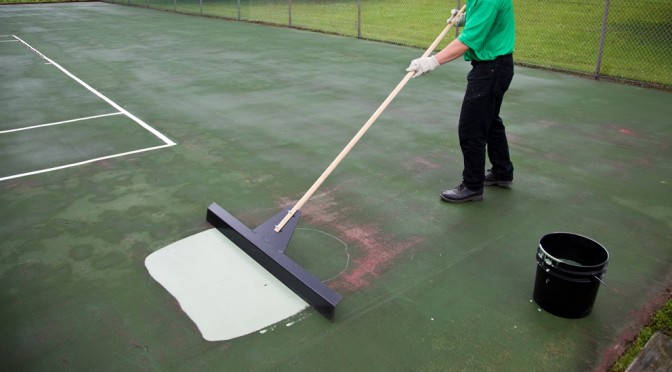So, how do you get rid of puddles on a tennis court? Puddles on a tennis court are a nuisance for many reasons. Either you wait for the water to evaporate before you play, or get a court dryer to move the puddles off the surface. Puddled areas, or low spots, can also be a trip hazard if they have sunk enough to effect the players footing.
But what about adverse effects on the acrylic surfacing? Acrylic tennis court surfaces are very durable, and designed to have good wet adhesion and resistance to the elements. However, if water sits on the surface for prolonged periods of time, it will shorten the coating life and begin to break it down. Plus, when water puddles in those areas, dirt and debris tends to accumulate in the water. This creates a sandpaper-like friction on the surface from play and scuffing of tennis shoes. The bottom line is, none of this is good for the tennis court surface.
Removing Low Spots and Puddles with Acrylic Patch Binder
The American Sports Builders Association maintains guidelines for puddles, or “birdbaths” on a tennis court surface. A hour after a rain, or flooding the court, any area where standing water is measured at 1/16″ (2mm) is in need of patching. This is usually measure by placing a U.S. nickel in the center of the puddle, and if the water covers the head of the nickel, it is deep enough to require leveling.
Acrylic Patch Binder is a 100% acrylic binder that is job-mixed with portland cement and specifically graded silica sand. This creates a slurry that can be poured into the puddle area and screeded in with a steel or aluminum straightedge. If done properly, this will bring the low, puddled area back to level and allow the water to flow off the court (with help from the court’s 1% slope).
Is Tennis Court Patching a DIY Project?

